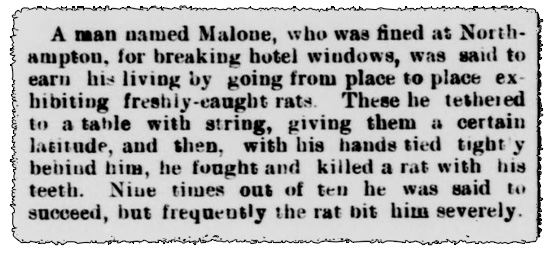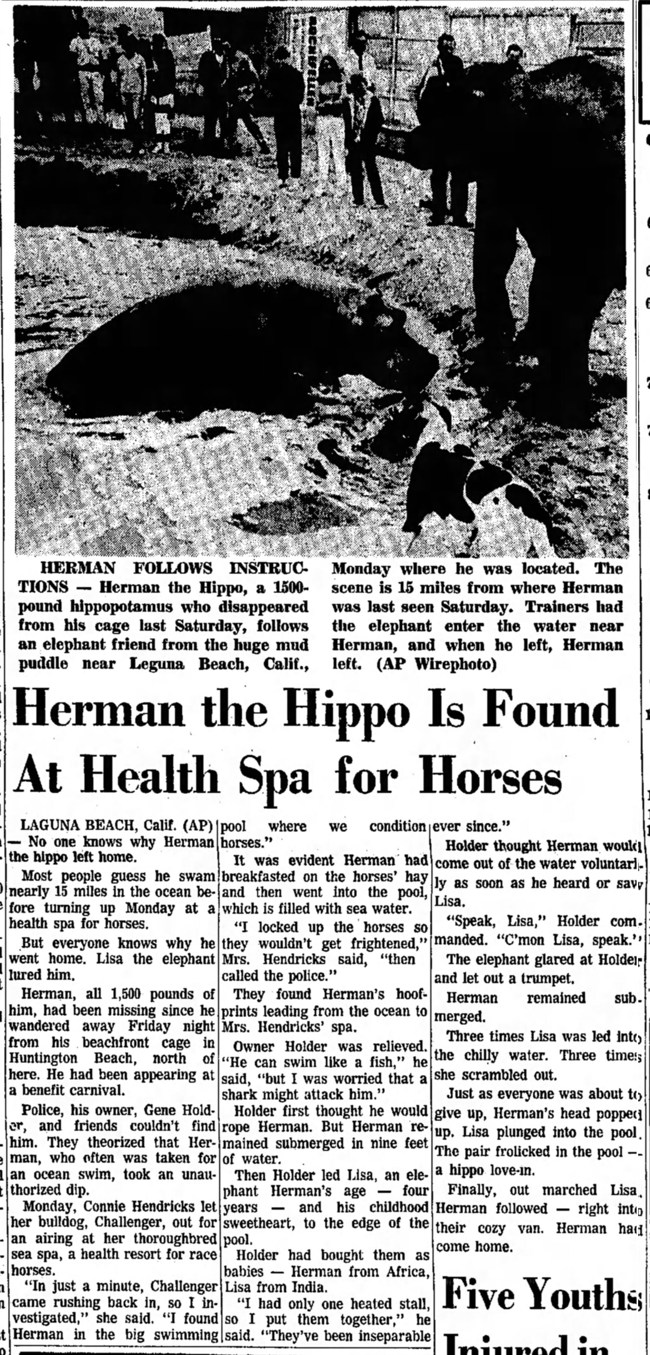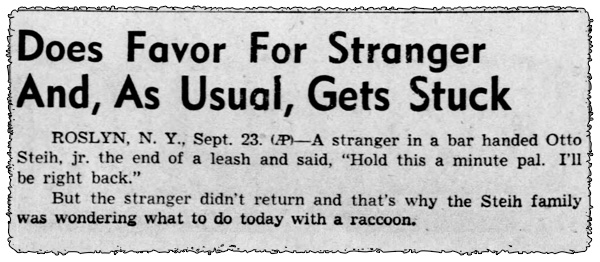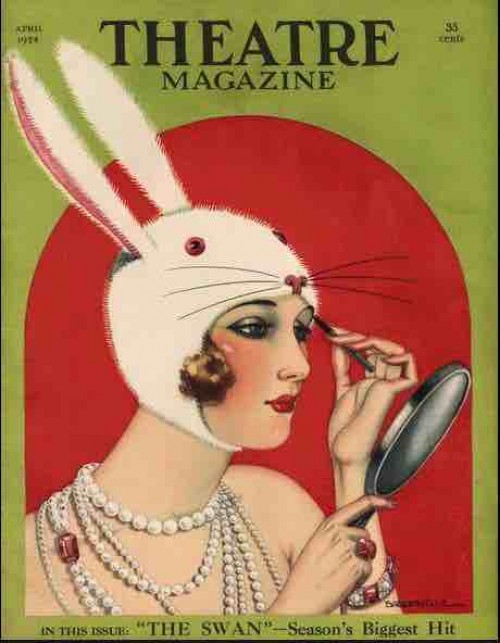Animals
Three-Winged Chickens
1950: Scientists at UCLA breed three-winged chickens. More buffalo wings on one bird!
Herald and News (Klamath Falls, Oregon) - Nov 9, 1950

The Eugene Guard - Nov 15, 1950
Posted By: Alex - Thu Apr 21, 2016 -
Comments (9)
Category: Animals, Science, Experiments, 1950s
Sued over mean snake
December 1971: Rae Adler, 28, sued the Critterville pet store, accusing them of selling her a "mean snake," unsuitable as a pet. It bit her the day after she brought it home, causing a toxic reaction.Unfortunately I can't find how this suit turned out.

Lebanon Daily News - Dec 15, 1971
Posted By: Alex - Tue Apr 19, 2016 -
Comments (12)
Category: Animals, 1970s
I Love Cow
Chanel recently launched an advertising campaign featuring the handwritten phrase "I love Coco." Or does it say, "I love cow"? It can be read either way.One of those situations where you wonder if the ad company just didn't see it, or did see it and kept it that way purposefully to make the campaign more viral.



Posted By: Alex - Mon Apr 18, 2016 -
Comments (12)
Category: Animals, Business
Malone the Rat Fighter
Tough way to earn a living.This 1908 news story may have inspired Roald Dahl's short story "The Ratcatcher" (first published in 1953 in Someone Like You). Even if Dahl hadn't seen this exact news piece, he must have heard stories (urban legends) about rat catchers doing this.

The Royal Gazette - Oct 6, 1908
Posted By: Alex - Sun Apr 03, 2016 -
Comments (9)
Category: Animals, Jobs and Occupations, Pests, Plagues and Infestations, 1900s
Herman the Hippo’s Big Adventure
March 24, 1967: Herman the Hippo disappeared from his pen at an animal show in Huntington Beach, California. For three days, no one could find him, despite a massive manhunt, and despite the fact that one would think it would be easy to spot a 1500-pound hippopotamus wandering around Orange County.Three days later he was found, 15 miles away, relaxing in a swimming pool at a horse ranch near Laguna Beach. The most likely explanation was that he had swum the 15 miles in the ocean.
Herman was lured out of the pool by bringing down his best friend, Lisa the elephant, whom he followed into their transport van.

Alton Evening Telegraph - Mar 28, 1967
Posted By: Alex - Sat Apr 02, 2016 -
Comments (4)
Category: Animals, 1960s
Left Waiting
The old "would you mind watching my raccoon for a minute" prank.
Reno Gazette-Journal - Sep 23, 1947
ROSLYN, N.Y., Sept. 23 (AP)—A stranger in a bar handed Otto Steih, jr. the end of a leash and said, "Hold this a minute pal. I'll be right back."
But the stranger didn't return and that's why the Steih family was wondering what to do today with a raccoon.
Posted By: Alex - Mon Mar 28, 2016 -
Comments (6)
Category: Animals, 1940s
Happy Easter 2016!

Posted By: Paul - Sun Mar 27, 2016 -
Comments (3)
Category: Animals, Holidays, Easter, Headgear
Follies of the Madmen #278
Posted By: Paul - Sat Mar 26, 2016 -
Comments (4)
Category: Animals, Business, Advertising, Products, Religion, 1960s, Cars
Brigit the Underwear Thief
Most cats, if allowed out, will bring home birds, rodents, and other critters that they've caught. But Brigit, a 6-year-old tonkinese who lives in Hamilton, New Zealand, has been bringing home underwear and socks. Lots of them. Says her owner, "It's all men's. It's really, really weird. She's got really specific taste."Brigit's owner has distributed flyers on the street in an attempt to reunite the underwear with the person it belongs to. But so far no one has claimed it.
More info: NZ Herald

Posted By: Alex - Wed Mar 23, 2016 -
Comments (15)
Category: Animals, Cats
DogVinci, the Dog Who Paints
Here at WU we've considered the art of a number of non-human species, including rats, otters, and horses. But not yet dogs. So it seems appropriate to give a nod to Dagger II (aka DogVinci) who's been making headlines lately as a canine artist. You can see some of his work at his Facebook page.The only other canine artist I'm aware of is Alexis Boyar, who rose to fame back in 1974. I've got an article about Boyar over at the Museum of Hoaxes — the hoax being that Boyar won a prize in an art competition, having failed to disclose on the entry form that he was a dog.

Posted By: Alex - Mon Mar 21, 2016 -
Comments (7)
Category: Animals, Art

| Who We Are |
|---|
| Alex Boese Alex is the creator and curator of the Museum of Hoaxes. He's also the author of various weird, non-fiction, science-themed books such as Elephants on Acid and Psychedelic Apes. Paul Di Filippo Paul has been paid to put weird ideas into fictional form for over thirty years, in his career as a noted science fiction writer. He has recently begun blogging on many curious topics with three fellow writers at The Inferior 4+1. Contact Us |




